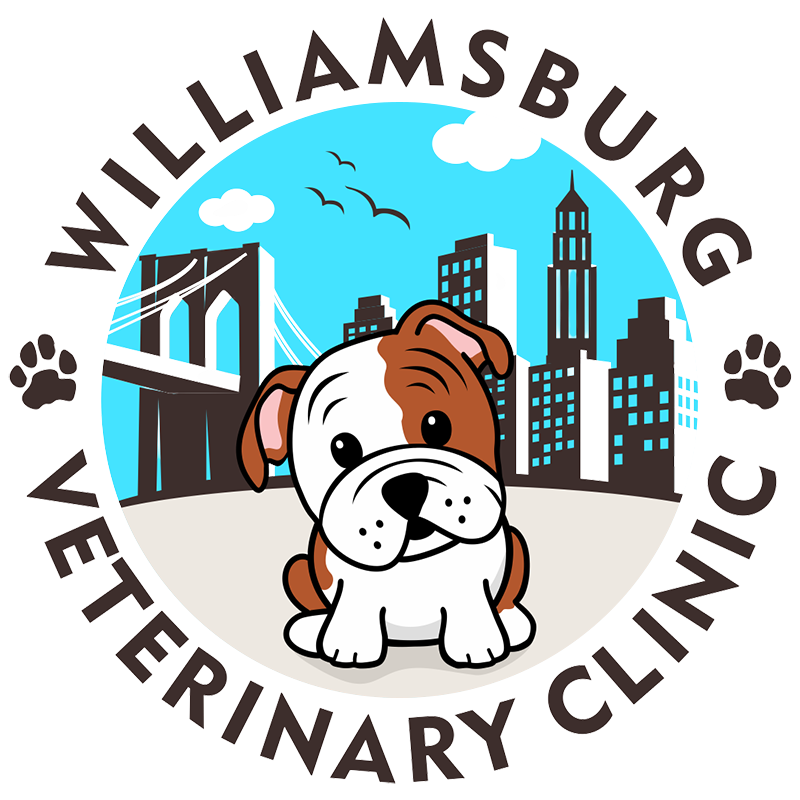Cherry Eye
CherryEye FAQs
The longer the third eyelid gland is in an abnormal position, the greater the risk the gland will be damaged and not fully functional when it is tacked back into place.
Learn more about Cherry Eye below!
Cherry Eye (Prolapsed Third Eyelid Gland)
WHAT IS A CHERRY EYE?
The third eyelid (or nictitating membrane) is a thin portion of tissue found under the inner corner of the lower eyelid of most domestic animals. A gland called the “third eyelid gland” or the “nictitating membrane gland” or the “haw” is located on the inner surface of the third eyelid. This gland produces 30-60% of the tears in the dog and cat.The gland is normally hidden behind the third eyelid, kept in position by a small ligament. A prolapsed gland or “cherry eye” is thought to be associated with a laxity or weakness of this ligament. The main orbital lacrimal gland, located beneath a portion ofthe skull bone above the eye, produces the rest of the tears. The amount of tears produced by each of these glands is variable. The longer the third eyelid gland is in an abnormal position, the greater the risk the gland will be damaged and not fully functional when it is tacked back into place. “Cherry eyes” are commonly seen in predisposed breeds, such as the Cocker Spaniel, Bulldog, Beagle, Lhasa Apso, Shih Tzu, and Bloodhound, but can occur in other breeds as well.
WHAT HAPPENS THE DAY OF SURGERY?
Your pet will be given pain control and sedative medications before surgery to help keep him/her calm. An IV catheter is then placed in his/her leg to administer fluids during and after surgery. For surgery, a breathing tube will be placed in his/her windpipe to administer gas anesthetic. Heart rhythm, blood pressure, blood oxygen and carbondioxide levels will all be closely monitored for the entire surgery (which usually lasts about 20 minutes to half an hour).
WHAT WILL I NEED TO DO AT HOME?
- When using eye drops, be sure to hold the lids open so the medication is placed directly into the eye. Wait 5 minutes between different drops so as not to flush out the previous medication before is has been absorbed. If you are required to use ointment, always apply it AFTER all the drops have been given.
- Keep the head collar on, even at night.
- Wipe away any discharge from the eye with a clean, moist Kleenex or face cloth.
- Keep your pet quiet.
- Call us if you have any questions or concerns!
- Book the recheck appointment as requested by the doctor. It is important to monitor the healing process.
HOW IS A CHERRY EYE REPAIRED?
In the past, the entire gland was surgically removed, but we now know that when this is done, the dog runs a greater risk of developing “dry eye” (“KCS” or keratoconjuntivitissicca) later in life. Dry eye is a serious condition that can be difficult to treat, and requires life long medication which can be expensive. The preferred method of treating a cherry eye is to surgically tack it back into place so that it remains functional. The chance of developing dry eye is lessened by tacking the gland back into its normal position. The success rate of this procedure is about 90% when done by an experienced veterinary ophthalmologist. This means that 10 out of 100 glands will popback out and require further surgery.
HOW WILL MY PET LOOK AFTER SURGERY?
After surgery, the third eyelid may look red and swollen for a few days, this is normal. To provide support, the third eyelid will be temporarily stitched to the side of the eye. This will make the third eyelid stay up, partially covering the eye. This is only temporary and will go back into normal position with time. You may also notice some bloody +/or blood tinged discharge from the eye for the first few days following surgery. This can be gently cleaned away with a moist kleenex.
Important!
It is important to know that despite surgery, dry eye may develop later in life if damage occurs to all of the lacrimal glands. This damage is usually associated with an immune system dysfunction and its occurrence cannot be predicted or prevented.
